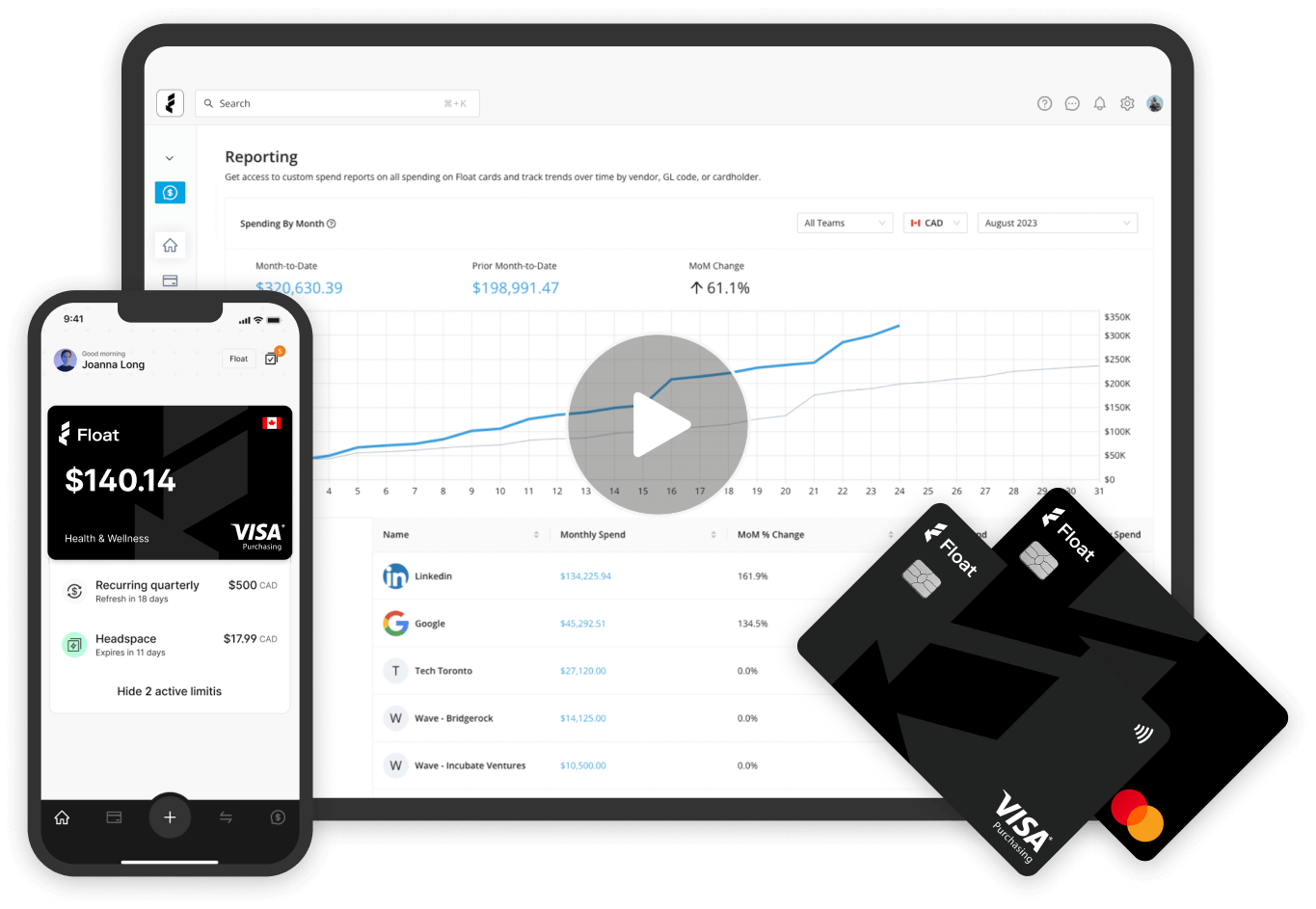Cash Flow Optimization
Working Capital Turnover: Measuring Efficiency
Ready to master your working capital turnover? Get expert tips from Float and Sendy Shorser.
October 17, 2025

When cash is tight, every dollar counts. Business owners need to know not just how much capital they have, but how hard it’s working.
That’s where the working capital turnover formula comes in. It’s a simple but powerful way to measure how efficiently your short-term resources generate revenue. Think of it as an important piece of the broader picture of working capital metrics that help owners measure efficiency.
The working capital turnover ratio tells you whether your business is squeezing value from its cash, receivables and inventory, or if money is sitting idle. And in the current climate of rising costs, it’s a metric no business can afford to ignore. In fact, high operating costs are the top financial challenge faced by SMBs.
So let’s dig in. We chatted with Sendy Shorser, President of Auxilium Financial, for expert insights on working capital turnover and what it means for his clients.
What is working capital turnover?
At its core, working capital turnover shows how effectively your business uses its working capital (current assets minus current liabilities) to drive sales.
The formula is straightforward:
Working capital turnover = Net sales ÷ Average working capital
Average working capital is calculated by dividing your beginning working capital plus your ending working capital by two.
Unlike the current ratio, which measures solvency or asset turnover (a broad view of overall assets), working capital turnover looks at short-term efficiency. It reveals how quickly your business can turn resources into revenue and is considered one of the most practical working capital metrics available.
“Working capital turnover is like short-term cash flow, which is the power behind a business,” says Sendy. “A company could be losing money, but if they have a strong cash position, they can survive a downturn and push through sudden challenges.”
Why working capital turnover matters
Strong turnover is more than helpful math to review after things happen. With a proactive approach, it becomes a survival tool. A business with healthy working capital turnover can absorb unexpected costs, weather slow periods and still cover essentials like payroll and rent.
“A client of ours recently faced new tariffs on imported goods but weathered the storm with healthy working capital,” says Sendy. “She had the ability to accept reduced margins in the short-term and take time to assess the long term impact on her growth strategy.”
In practice, a healthy working capital turnover ratio signals more than efficiency. It usually indicates clients are paying on time, collections are strong and the business is organized.
“It also shows owners know how to use their vendors strategically by receiving faster and paying slower when it makes sense,” says Sendy.
How to calculate working capital turnover: A step-by-step guide
Understanding the formula is one thing, but seeing how it comes together in practice makes it much clearer. Breaking the calculation into simple steps allows you to apply it to your own numbers to see how efficiently your working capital is driving sales.
Here are four steps to figuring out your working capital turnover:
1. Find net sales for the period
Use your income statement to get the total net sales.
2. Calculate the beginning and ending working capital
Current assets minus current liabilities at the start and end of the period.
3. Find the average
Add beginning and ending working capital, then divide by two.
4. Apply the formula
Net sales ÷ Average working capital = Working capital turnover
For example, let’s look at a business with a net sales figure of $2,000,000 and see what we can learn from its working capital calculation.
- Net Sales: $2,000,000
- Beginning Working Capital: $300,000
- Ending Working Capital: $500,000
- Average Working Capital = ($300,000 + $500,000) ÷ 2 = $400,000
Working Capital Turnover = $2,000,000 ÷ $400,000 = 5
This means that for every dollar of working capital, the company generated $5 in sales during the period. In other words, the net sales to working capital ratio is five, a strong indicator of efficiency.
How to interpret working capital turnover
High turnover can signal efficient use of capital, but too high a turnover may indicate thin liquidity. Low turnover can mean inefficiencies, such as slow receivables or excess inventory. The trick is not to view the number in isolation, and to compare within your industry.
“Industry differences are critical,” says Sendy. “For example, Costco turns inventory in 30 days because everything moves fast and people pay immediately. A construction company might instead have ways to cut costs mid-project. Applying the same benchmark would make no sense.”
Always evaluate working capital efficiency in context. For service businesses, turnover might look slower, but that isn’t necessarily a red flag.
“In some companies, efficiency comes from having the right supplies at the right time, not the fastest turnover,” says Sendy.
Pro tip: Compare your ratio to peers in your industry, not to a giant retailer ringing through thousands of barcodes every hour.
Common challenges that affect turnover (and how to improve them)
Even when you know the formula and what the numbers mean, the real challenge is keeping your ratio healthy in day-to-day operations. Businesses often trip over the same obstacles, but spotting them early can make all the difference.
Working capital turnover can get dragged down by several recurring issues:
- Slow receivables: The longer an invoice sits unpaid, the less likely you are to collect. Failing to stay on top of receivables is a major pitfall. Instead, try tightening credit terms and requiring references before extending credit to help level cash flow.
- Excess or mismanaged inventory: Buying in bulk might save money upfront, but storing too much ties up cash. That volume discount doesn’t look so tempting once you factor in the storage fees until the product is sold.
- Limited access to credit: Even profitable businesses can stumble without a cushion. It’s wise to gain access to credit before you need it, because once things get tight, it may be too late.
The fix often comes down to balance: collecting receivables faster, negotiating payables smarter and aligning inventory with realistic sales forecasts. Expense management, credit controls and thoughtful purchasing all play a role in improving working capital efficiency.
Make expense management even easier
Streamline your business spending with automation tools built right into Float.
Balanced capital efficiency is best
Working capital turnover management takes visibility, discipline and balance. Too low, and your capital is stuck. Too high, and you may be running on fumes. The sweet spot depends on your industry, your clients and your growth stage.
“You can have a very strong income statement and still go bankrupt because the balance sheet isn’t healthy,” says Sendy.
Remember, regular monitoring of working capital metrics helps you catch issues before they become crises. Tools like Float make it easier by improving visibility into business spend, automating payables and letting businesses earn interest on idle cash, which means every dollar works harder.
Written by
All the resources

Financial Controls & Compliance
4 Free Online Bookkeeping Courses for Canadian Businesses
Want to level up your bookkeeping? These courses might be the key. Read more to learn what you should be
Read More
Cash Flow Optimization
Net Working Capital: How to Measure & Manage It
Let's explain what net working capital is, how to calculate it and tips for best ways to use it.
Read More
Cash Flow Optimization
A Step-by-Step Guide to Cash Flow Forecasting
Let's explore what cash flow forecasting is, why it matters to your business and how you can build a reliable
Read More




